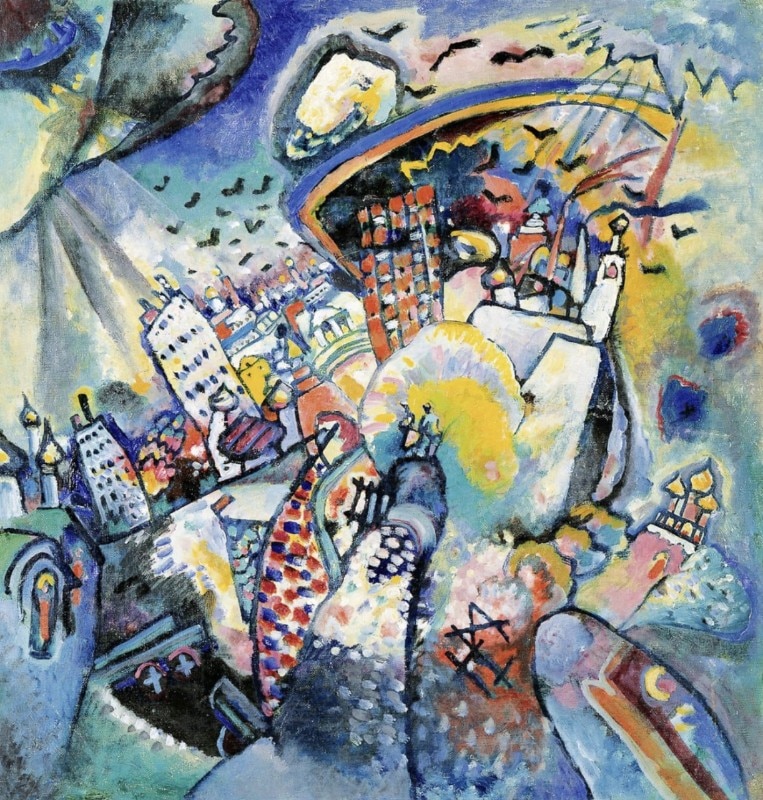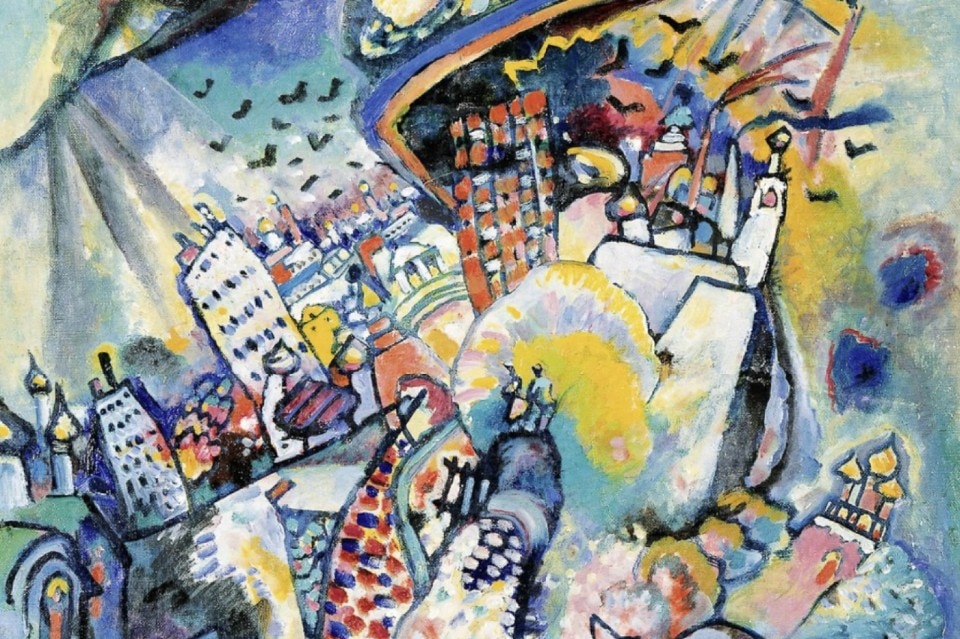Ukraine is in an extremely difficult situation. We receive daily news of massacres and battles from the front. “The Donetsk region is under constant Russian attacks and there are constant attempts to break through our defense,” President Zelensky says. Peace still seems too far away.
The history, literature, art of the Eastern countries, however, remind us of a different, albeit imperial, country that is at least fascinating.
“Certainly, I am not thrilled with all the things I see around here. As an intellectual, they vex me. As a man with his own views, they offend me,” Aleksandr Pushkin wrote in a letter to Petr Chaadaev dated Oct. 19, 1836.
Russia, the great mother Russia.
This entire interior and exterior Moscow I consider the root of my artistic ambitions. It is my artistic tuning fork.
In 1916 the Russian, naturalized French artist, Wassily Wassilyevich Kandinsky, painted the famous Red Square, with a blaze of moving colors depicting perhaps the best-known place of the Russian nation. The painting displays a completely abstract landscape and an almost fairy-tale atmosphere. Great space is dedicated to primary colors: accents of a pure and vivid yellow, red, blue, combining softer but vibrant shades such as pink or light blue created by quick and broad brushstrokes.

The square is unrecognizable, appearing in a centrifugal motion that seems to give rhythm to the life of the city, everything flows, everything passes, everything happens. “This entire interior and exterior Moscow I consider the root of my artistic ambitions. It is my artistic tuning fork. I have the feeling that it was always thus and that as time went on and due to the exterior formal advances, I constantly painted this ‘model’ only with constantly stronger expression, in fully new form and am painting it today,” Kandinsky himself says.
The name Red Square, stems from a translation error. In fact, the name is not inspired by its complex, gilded burgundy buildings, or even by the red flag or other symbols of communism, quite the opposite: Krasnaja Ploshchad. The first word, Krasnaja, in archaic Russian meant ‘beautiful,’ while in the modern language it has the meaning of ‘red.’ Indeed, it is no coincidence that in the Jewish tradition the word ‘red’ means ‘alive.’ In languages of Slavic stock, ‘red’ has the meaning of ‘alive and beautiful.’ Beautiful Square, that is its real name.
I have the feeling that it was always thus and that as time went on and due to the exterior formal advances, I constantly painted this ‘model’ only with constantly stronger expression, in fully new form and am painting it today.
A misunderstanding then. Is this absurd war a misunderstanding as well? The hope is that all Ukrainian squares will shine again, everything will end, everything will subside, and Russia will take a breath in memory of all its history and all its beauty.
“It is sad, yet joyful, on a silent summer’s night, in a voiceless wood, to hear a Russian song. Here we find unlimited sadness without hope. Here, also, unconquerable strength and the unalterable stamp of Fate; here, also, is iron predestination, one of the primitive foundations of Russian nationality, through which much might be explained which seemed inexplicable in Russian life. God knows what one does not hear in a song at night in the silent wood!” Aleksey Konstantinovich Tolstoy (1817-1875), Prince Serebrenni


